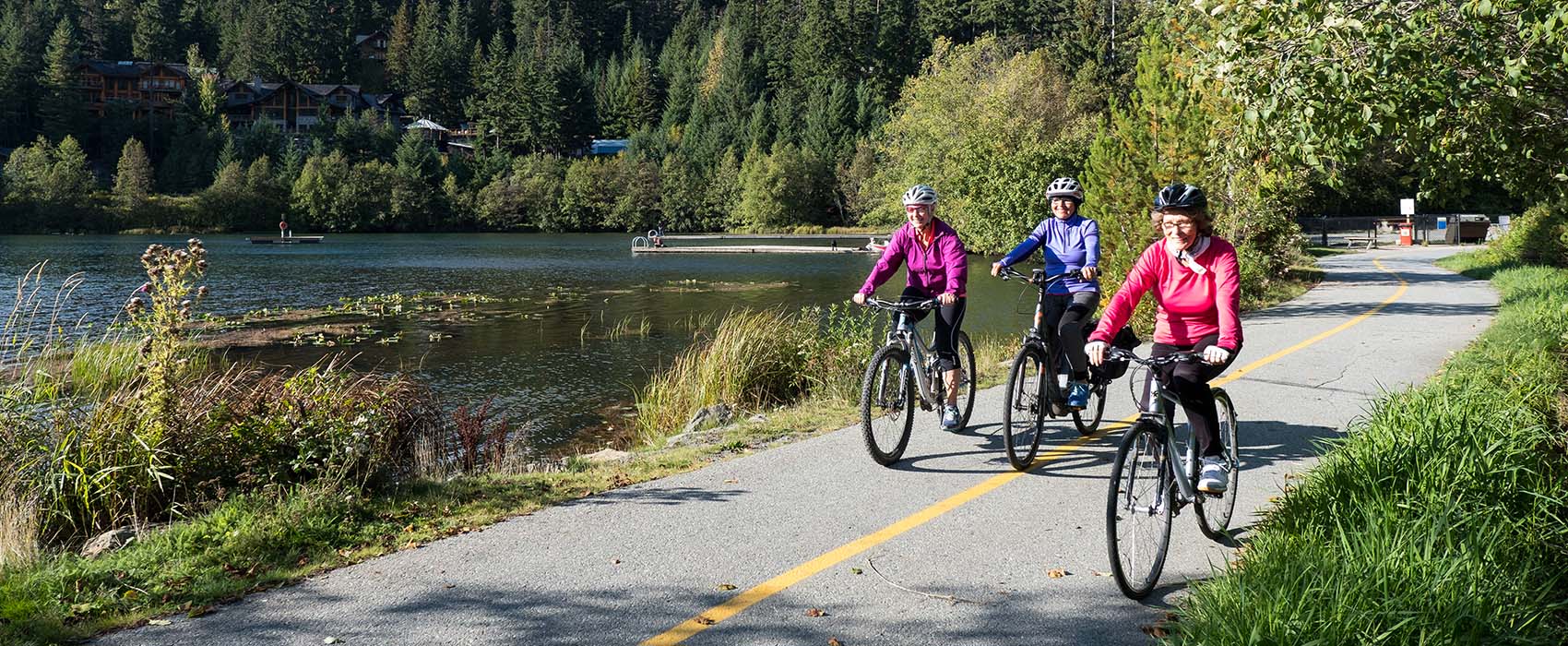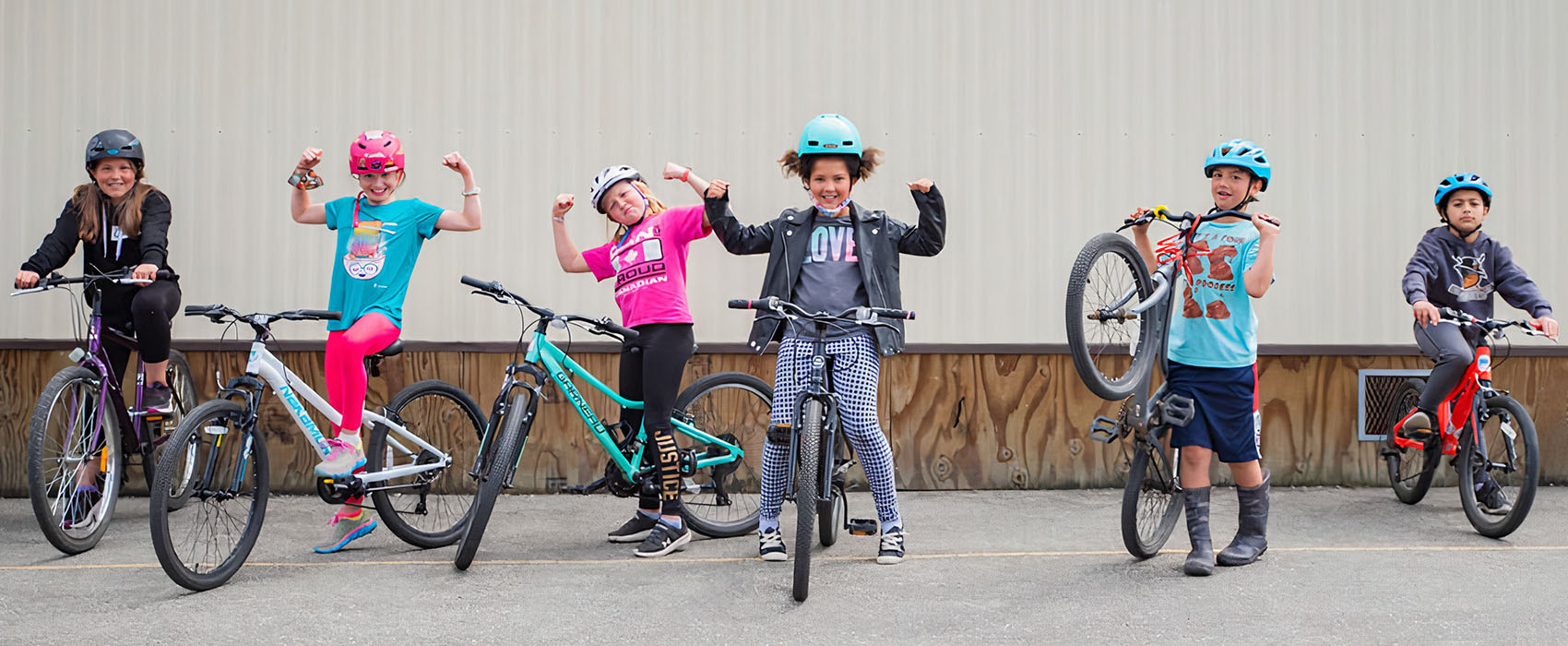Your essential summer cycling prep guide
As the weather warms up, the outdoors begin calling, and there’s no better time to ride your bike. Cycling can benefit our health in so many ways – both physical and mental – plus it’s good for the environment too.
If it’s been a few months (or years!) since you last went for a bike ride, no worries, we got you. We’ve teamed up with our friends at HUB Cycling to help you prepare your bike for the season, including tips for safe cycling so you can ride comfortably all year long.
Step 1: Get your bike road ready
The first step is to inspect and tune-up your bike. Here are a few things to look for:
- Inspect your brakes. Make sure they’re clean and have enough padding remaining to last through the season. Tip: brake pads typically have grooves cut into the rubber, so if the grooves are gone, it’s time to replace them.
- Clean your bike chain. Clear off dust, dirt and gunk, and re-oil to keep it moving nice and smooth. Tip: it’s easier to clean your chain if you stand the bike upside down, so you can turn the pedals with your hand while applying oil to the chain along the derailleurs while changing gears to ensure they change easily.
- Check your tires. Look for cracks and ensure the tires can stay inflated. If your bike has been sitting for a while, the tire tubes may need replacing.

In addition to inspecting your bike and ensuring that it’s good to go, there are a few essential accessories you’ll need - some of which are required by law to ride on public roads:
- Use lights. A good front light will allow you to be seen at least from 150m ahead, and a red light on the back of your bike (most often mounted to your seat post) ensures people driving behind can always see you. The front light is legally required if you’re riding between 30 minutes after sunset and 30 minutes before sunrise.
- A bell or horn. Use a quality bell or horn to communicate with the people with whom you’re sharing the road, or use your voice and yell when passing.
- Front and back fenders. If you ever get stuck riding in the rain (although hopefully you don't in the summer!), your clothing will be very happy you installed fenders - they will protect your body and bicycle from the water, mud and sand kicked up from the road.
- Pack it up. Planning to use your bike for day trips, picnics or picking up groceries? Install a rack, panniers or cargo trailer to hold everything, so you don’t have to carry a backpack. Shopping by bike is easier than you think! Consider giving it a try this summer with HUB Cycling's free Bike to Shop event from August 1-31, 2023.
Step 2: Get yourself road ready
Now that your bike is ready, it’s time to get yourself ready to ride! In addition to basics like dressing for the weather and wearing a properly fitted helmet, here’s what you should do before heading out:
- Dress to be seen. Lights and reflectors are great, but brightly coloured clothes or a reflective vest are a good idea for added safety.
- Get a high-quality lock. A good lock will give you some peace of mind when you have to leave your bike behind while running errands. Never use only a cable lock - they are much easier for bike thieves to cut! Get a good U-lock or metal folding lock. You should also register your bike with Project 529 to help deter bike thieves.
- Carry an emergency kit. Pack it with a basic tool kit (a compact pump, spare tire tube, tire lever and duct tape), bandages, alcohol wipes, sunscreen and a rain jacket. If you’re going for more extensive treks, here’s what to include in a comprehensive bike repair kit.
- Prep your little ones too. Cycling is a great activity for the whole family. Here are some pointers to teach your kids bike safety and help them follow the rules of the road.

Step 3: Stay safe on the road
Ok. So now that your bike is tuned up and you have all the gear you need, it’s time to hit the road. Here are a few essential tips to keep you safe while riding - including the rules and laws of cycling in BC:
- Know your surroundings. Be aware of other people driving, cycling and walking around you, because they may not see you.
- Watch the road. Keep an eye out for slick spots, loose gravel or dirt, deep puddles and potholes to avoid any spills or accidents.
- Mind car doors. If you pass parked cars, keep at least one metre distance and watch to see if the driver is about to step out, as you’re likely approaching from their blind spot.
- Understand the rules. For novice and experienced riders alike, it’s always good to stay up to date on the rules of the road. The BC Cycling Coalition has put together this handy guide for BC cycling laws, but it’s a good idea to also check your local bylaws.
Want to learn more about safe riding? HUB Cycling's Go by Bike Week runs from May 29-June 4 with free webinars covering a range of topics, and 30+ celebration stations giving away maps and free bike checks. Check out the full schedule here.
In case of the unexpected, BCAA can help
Most BCAA Members are familiar with our 24/7 Emergency Roadside Assistance, but did you know that you can get the same level of service when you're riding your bike as when you take the car?
If you find yourself with a flat tire, a broken chain or some other breakdown, give us a call and we'll send a BCAA Auto Services Tech to help you get back on the road. If the breakdown or mechanical issue cannot be repaired on the spot, we'll drive your bike to a nearby repair shop or your home (up to the distance included on your BCAA Membership plan). For those with a motorized E-Bike, make sure you have a Plus or Premier Membership which includes coverage for E-Bikes and Motorcycles.
Not a BCAA Member yet? Join today and get BC’s Best Roadside Assistance, including Bike Assist, for less than $8 a month.







